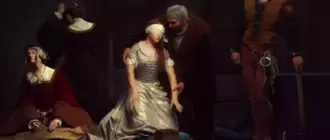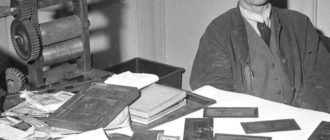
Plein air implies that a painter has a limited amount of time to write a work. The artist does not continue to work on the painting in the studio after returning from nature to make any adjustments. Otherwise, the work will turn out to be qualitatively different, since the active role of light and air in the course of work on it will be irretrievably lost.

Features
Plein air is a rather complicated technique for novice painters. When painting a picture in the open air, the surrounding light-air environment is constantly changing, all kinds of color shades appear and disappear. This becomes especially noticeable in sunny weather with variable cloud cover.
The artist can paint in the open air with various types of paints: oil, watercolors or acrylics. But in order to perfectly convey all the richness of nature in natural light, he has to take into account many nuances, including the time of day and the season of the year.

The modest size of most plein air paintings can be easily explained by the peculiarities of working on them. The artist has to not only carry with him all the necessary materials for creativity, but also often climb in search of a spectacular nature in hard-to-reach places.
Plein air history
The history of the plein air is just over 200 years old, but its origins go back to the beginning of the Early Renaissance in the first half of the 15th century. It was at that time that the landscape genre was formed in European fine art.
To create colorful and realistic paintings on the theme of the surrounding nature, artists had to travel far beyond their home. On nature, painters most often made only sketches or studies depicting the main composition of a future painting.

Upon returning home, the artist continued to work on the work in a workshop. Here he painted a picture from memory and based on previously created sketches for a long time. This tradition existed for about 300 years, before the advent of romanticism in European painting.
Real plein air painting originated in England at the beginning of the 19th century. Its founders are considered to be two prominent British artists: John Constable and Richard Parkes Bonington. They dared to go against the established traditions and decided to paint from beginning to end in the open air. The first full-fledged plein-air work of Constable is dated 1815 “Building a boat near Flatford mill”.

The innovative works of the artists were coolly received in England, but at the Paris Salon of 1824 they were a resounding success. In France, the plein air has found a large number of admirers. Camille Corot was one of the first to become interested in the new technique.
Later many representatives of the famous Barbizon school:
- Théodore Rousseau
- Jean-François Millet
- Jules Dupré.
In the 1840s, interest in plein air was also boosted by a landmark invention in the field of artistic materials. The industrial production of paints in tubes began, which allowed artists to paint outdoors in more comfortable conditions.

In the early 1860s. In Italy, a group of artists called Macchiaioli was formed, which included Telemaco Signorini, Giovanni Fattori, Giuseppe Abbati and other painters. They were united not only by a passionate desire to combat academism in Italian art, but also by their love of working in the open air.

Claude Monet made a huge contribution to the popularization of plein air painting.
And later, other impressionists began to actively use this technique:
- Camille Pissarro
- Auguste Renoir;
- Alfred Sisley
- Frederic Bazille (Jean Frédéric Bazille).

By the end of the 19th century, art communities appeared in many Western countries, which united active supporters of the plein air. Most of them worked in the landscape genre and gravitated towards the impressionist style. Throughout the 20th century, the plein air has not lost its popularity. This technique was often used in their work by artists of various directions of painting. One of the greatest contemporary masters, David Hockney, is also considered an active supporter.
Art schools around the world continue to teach children the art of painting outdoors in the 21st century. Despite the emergence of new styles and trends, the plein air has not only an interesting past, but also a wonderful future.

Famous plein air painters
It is difficult to choose the best among the many famous plein air artists. And yet, such masters deserve a separate mention in our article:
- John Constable (1776-1837) was an outstanding English painter whose work was appreciated only after his death. With its charming landscapes, he forever glorified the surroundings of his native Suffolk.
- Richard Parks Bonington (1802-1828) was a British artist whose talent was never fully revealed due to an early death from tuberculosis. At the age of 22, he received a gold medal at the Paris Exhibition and was treated kindly by critics. Bonington’s watercolors had a huge impact on Camille Pissarro, and many of them were sold for big money at Sotheby’s a year after the death of the genius.
- Claude Monet (1840-1926) is the most famous impressionist in the history of world art. Monet throughout his life did not stop working in the open air and deservedly achieved worldwide recognition. His landscape “Impression. Sunrise “gave the name to the famous direction in painting and forever became the standard of impressionism.
- Isaac Levitan (1860-1900) is an unsurpassed master of Russian landscape, who did not even live to be 40 years old. His deeply spiritual paintings convey the beauty of his native places as well as possible and make viewers think about eternal truths.








